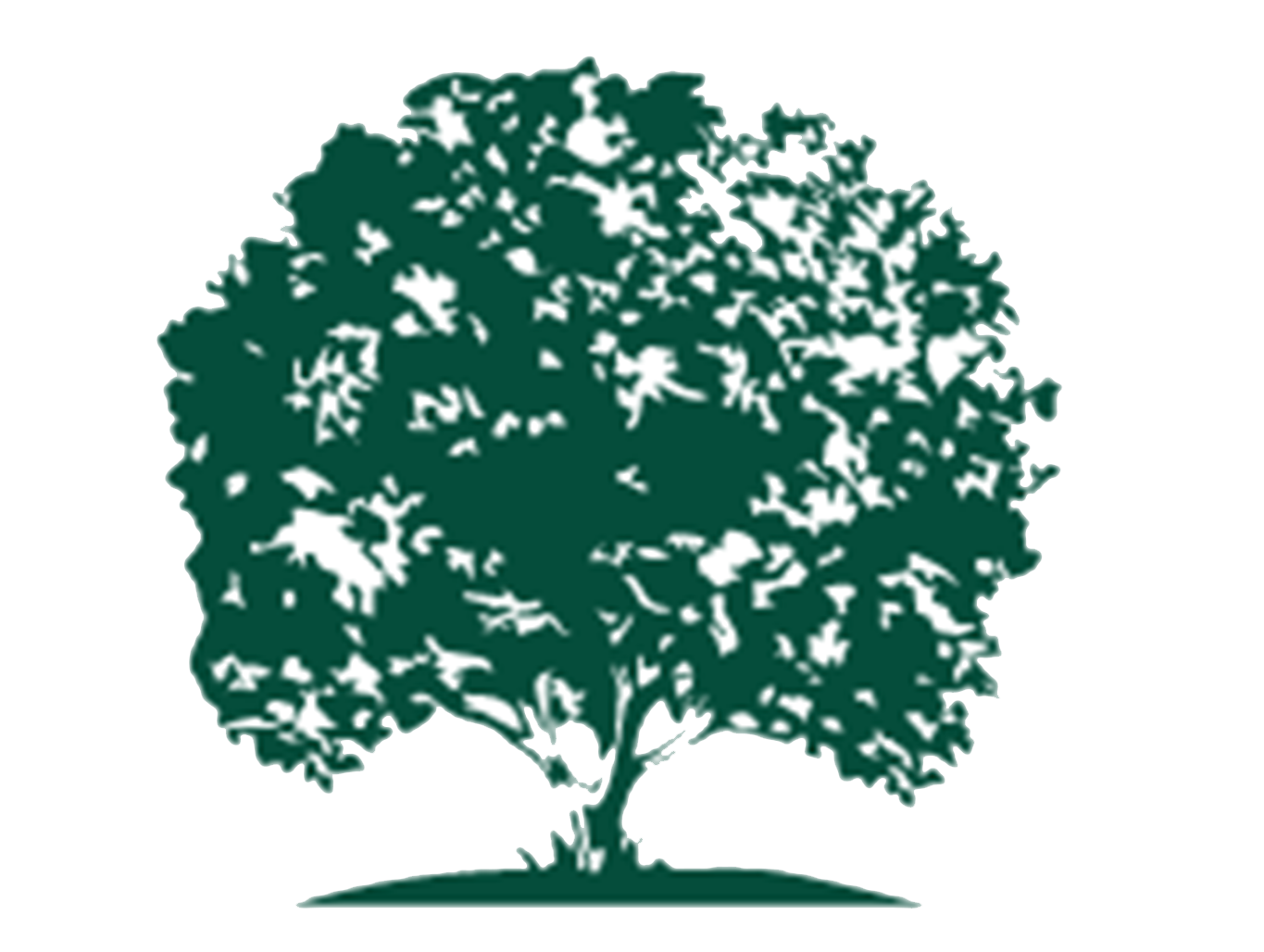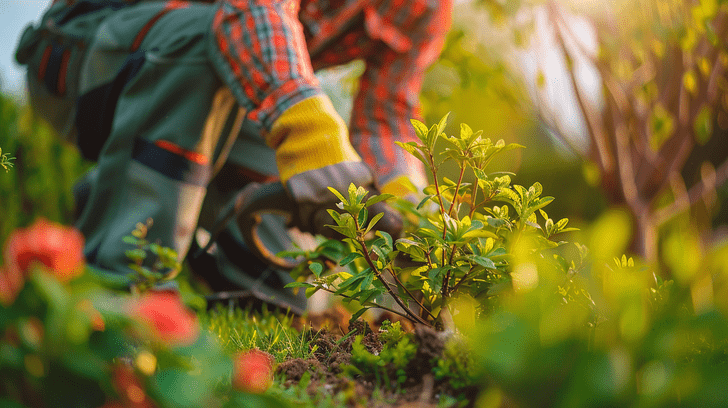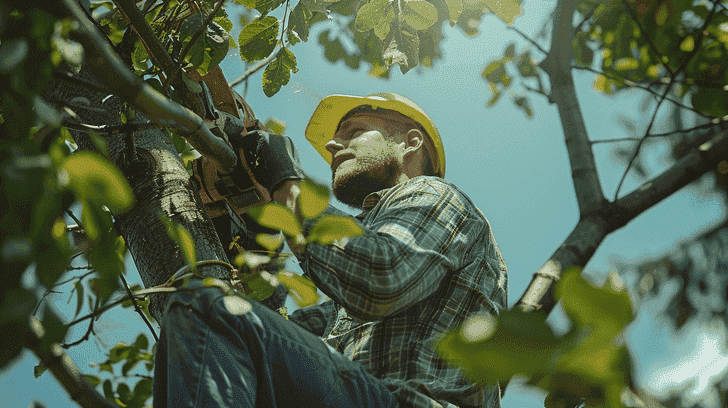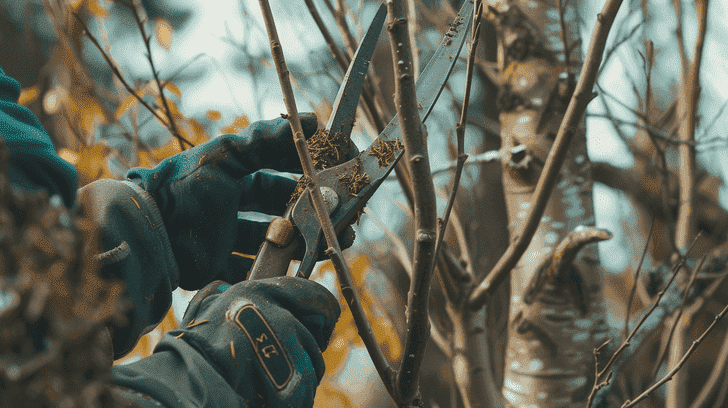Is Tree Trimming Considered Landscaping?
Tree trimming can be considered a form of landscaping but with some key distinctions. Landscaping generally focuses on the aesthetics and overall appearance of a property’s outdoor spaces.
This includes maintaining lawns, gardens, and other plantings. Tree trimming, on the other hand, can have both aesthetic and health-related purposes.
While it can improve the look of a tree, it’s also essential for removing dead or diseased branches, promoting healthy growth, and ensuring safety by preventing hazards like falling limbs.
There’s some overlap between landscaping and tree trimming. Some landscaping companies offer basic tree trimming services as part of their packages.
Landscaping Defined: Cultivating Beauty and Curb Appeal
Landscaping encompasses the art and practice of transforming a bare plot of land into a visually pleasing and functional outdoor space.
It involves a variety of elements that enhance a property’s aesthetics and curb appeal, the first impression your home makes on passersby.
Here’s a breakdown of some key aspects:
Cultivating a Lush Lawn: A vibrant, well-maintained lawn forms the foundation of most landscapes. This involves activities like mowing, edging, and aeration to promote healthy grass growth.
Planting Powerhouses: Flowers, shrubs, and trees add pops of color, texture, and visual interest. Landscapers strategically place these elements based on factors like sun exposure, water needs, and desired aesthetics. Popular flowering plants include roses, perennials, and seasonal blooms.
Garden Grandeur: Well-designed gardens add a touch of personalization and can be functional, growing herbs or vegetables. Landscapers may incorporate hardscaping elements like pathways, retaining walls, and patios to create designated garden spaces.
Maintaining Magic: The magic doesn’t stop after planting. Regular maintenance is crucial to ensure a healthy and visually pleasing landscape. This includes weeding, pruning, fertilizing, and addressing any pest or disease issues.
Tree Trimming: A Balancing Act for Arbor Health and Beauty
Tree trimming is the strategic removal of branches from a tree to achieve specific goals. Unlike basic pruning, which focuses solely on removing dead or diseased wood, trimming encompasses a broader range of objectives.
Here’s a closer look at the two main purposes of tree trimming:
Promoting Tree Health: Trimming plays a vital role in maintaining the overall health and longevity of a tree. Certified arborists, professionals specializing in tree care, often perform this type of trimming.
They may remove dead branches, diseased limbs, or suckers (shoots that grow from the roots or base of the tree) to prevent the spread of disease and promote healthy growth.
Additionally, thinning out dense branches allows for better air circulation and sunlight penetration, both essential for optimal tree health.
Enhancing Aesthetics and Safety: While promoting tree health is a primary concern, trimming can also be done for aesthetic reasons.
This might involve shaping the tree’s crown, a cluster of branches at the top, to achieve a desired form or removing branches that obstruct views or block sunlight from reaching a patio.
Trimming also plays a crucial role in safety by removing hazardous limbs that could break and fall, potentially causing property damage or injury.
This type of trimming often focuses on removing weak, diseased, or poorly attached branches that pose a risk.
Blurring the Lines: Where Landscaping and Tree Trimming Overlap
The worlds of landscaping and tree trimming sometimes intersect. Many landscaping companies offer basic tree trimming services as part of their comprehensive packages.
This might include tasks like removing low-hanging branches that obstruct walkways or trimming shrubs to maintain a desired shape.
These basic trimming services often align with the overall aesthetic goals of landscaping, aiming to create a cohesive and visually appealing outdoor space.
Both landscaping and tree trimming, even when performed separately, contribute significantly to the curb appeal of a property.
A well-maintained lawn with strategically placed flower beds complements a properly trimmed tree, creating a sense of balance and harmony in the outdoor environment.
Ultimately, both practices enhance the visual impact of your property, increasing its value and fostering a sense of pride in your outdoor space.
Key Differences Between Landscaping and Tree Trimming
While there’s an overlap between landscaping and tree trimming, some key distinctions set them apart. The most significant difference lies in the expertise required.
Landscapers typically possess a strong understanding of horticulture and general plant care. They can handle tasks like planting flowers, maintaining lawns, and basic trimming of shrubs.
However, for complex tree trimming jobs, particularly those involving mature trees, consulting a certified arborist is highly recommended. Arborists are tree care specialists with extensive knowledge of tree biology, disease identification, and proper pruning techniques.
Another key difference is frequency. Landscaping services like mowing and weeding are often performed on a routine basis, typically weekly or bi-weekly, to maintain a polished look.
Tree trimming, on the other hand, is usually a more sporadic event. The need for trimming may arise due to seasonal changes, storm damage, or as part of a long-term tree health management plan.
Finally, the complexity of the work is a differentiating factor. Landscaping tasks typically involve readily available tools like lawnmowers and trimmers.
Tree trimming, especially for large or hazardous trees, can be dangerous and requires specialized equipment like chainsaws, ropes, and climbing gear.
Arborists are trained in safe tree climbing techniques and possess the proper equipment to handle complex trimming jobs efficiently and safely.
Conclusion: Finding the Right Fit for Your Needs
In conclusion, tree trimming can be viewed as an extension of landscaping, but with a specialized skillset. For simple tasks like removing low-hanging branches or maintaining shrub shapes, basic trimming services offered by landscapers might suffice.
These services often align with the overall aesthetic goals of landscaping, aiming to create a visually pleasing outdoor space.
However, when dealing with complex tree trimming jobs, particularly those involving mature trees, specialty knowledge and expertise become crucial. Consulting a certified arborist is highly recommended.
Arborists possess the training and experience necessary to assess tree health, identify potential problems, and perform safe and effective trimming techniques that promote tree health and longevity.
Ultimately, the decision of who to hire depends on the specific needs of your project.
For basic trimming needs that complement your landscaping goals, a landscaping company might be a good fit.
However, for complex jobs requiring a focus on tree health and safety, consulting a certified arborist is the recommended course of action.







